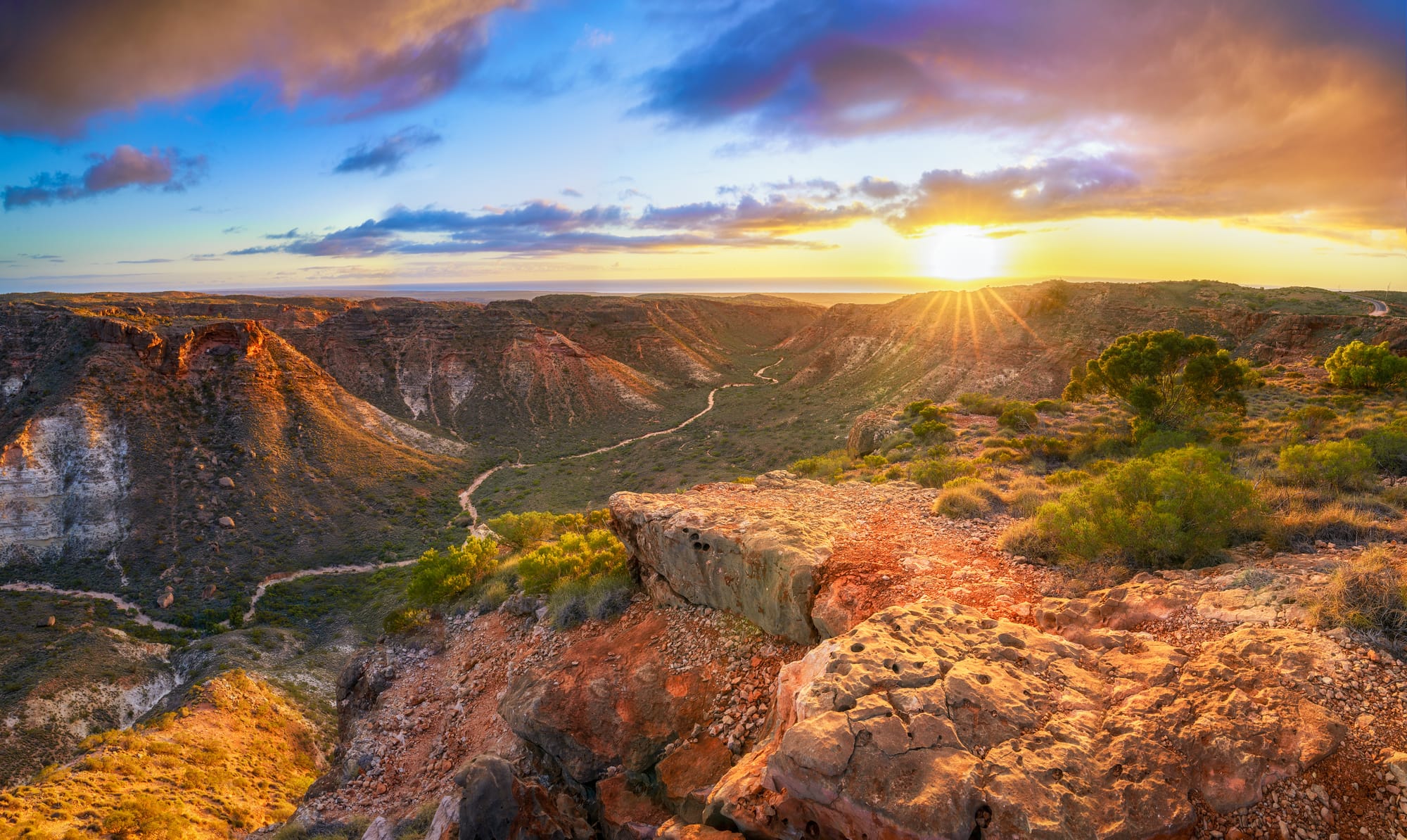South of the Western Australia region on the banks of the Indian Ocean and the Swan River, Perth is the largest city of western Oceania. Indeed, this modern and lively city is nestled in the middle of wild nature between its idyllic sandy beaches and nature reserves. First, Perth city center is mainly concentrated near ►
South of the Western Australia region on the banks of the Indian Ocean and the Swan River, Perth is the largest city of western Oceania. Indeed, this modern and lively city is nestled in the middle of wild nature between its idyllic sandy beaches and nature reserves. First, Perth city center is mainly concentrated near the Swann River, where you can shop in the London Court district or admire the tall buildings that characterize the Business Centre. Among them is the Swann Bells, a copper and glass tower over 80 m high and home to 18 bell towers.
Despite the undeniable modernity of the city, it also has many buildings dating from the nineteenth century, including the emblematic Barracks Arch, defined by its red bricks and fort-like look. To learn more about the natural and cultural heritage of the West Coast, check out the Western Australian Museum, which houses diverse collections of photographs, artifacts, and even a zoological space of reptiles and spiders from the region.
For a glimpse into Perth's flora and fauna, head to Kings Park and Botanic Garden, world-renowned for its scientific research. This 400-hectare park has about 3,000 species of wild plants and the State War Memorial honoring the dead of World War I and World War II. You can only go to Perth by exploring Heirisson Island, the perfect place to stroll along the banks of the Swann River and spot the kangaroos that live there.
Less than 20km off the coast of Perth, Rottnest Island will offer a breathtaking setting with the impression of being cut off from the world. After a 25-minute ferry crossing from Fremantle, you will arrive on an island with unparalleled flora and fauna. Going around the island aboard a bike or bus around the island's beaches is possible. The Basin, a lagoon with clear waters ideal for snorkeling, is 10 minutes from Thomson Bay Harbour. Continuing a few minutes on foot, you will discover other coves more and more isolated. The island is also known for its quokka population, a small marsupial with a permanent smile that will make your stay at Rottnest Island more touching. The island is also home to many birds, reptiles, sea lions, dolphins, fish and crustaceans.
The Wave Rock site 330 km east of Perth is 60 million years old. This geological site is a rock formation composed of ochre granite that owes its name to the wave-shaped rocks. At 1.7 km from the site parking, you can admire the Hippo's Yawn, which are colossal ball rocks 12 meters high. Not far away, there is a beautiful salt lake which, depending on the season, reveals either water or a surprising crust of salt.
Suppose you want to combine swimming and meeting a colony of kangaroos, head to the most beautiful beach in Australia: Lucky Bay. In the far south of the region, on Cape Le Grand, this idyllic beach has become a popular destination in Western Australia because of its white sand and turquoise waters.
Don't miss Karijini National Park in the northwest of the region. This nature reserve within the Hamersley Range Mountains offers picturesque landscapes with reddish cliffs, waterfalls, basins and crystal clear rivers mingling. Many activities are provided on land and water, such as hiking, climbing, canoeing, or even swimming in the natural pools in the hollow of the gorges. Although the area is relatively dry, the park offers lush wildlife in both summer and winter. It is also advisable to stay in one of the nearby campsites, so as to attend one of the must-see spots.
Among the many nature reserves in Western Australia is Kalbarri National Park. In the heart of the coastal cliffs of the Indian Ocean, the emblematic 186,000-hectare state park brings together hiking enthusiasts on its many circuits. The most popular of these is the Nature's Window & the Loop, a 9.2 km loop where you will find the famous rock window on your way that gives a panoramic view of the Murchison River. Also, you can explore the park on horseback, in the gorges by canoe or helicopter.
The reef of Ningaloo Reef stretches for 260 km on the coral reef and represents a real jewel for nature lovers. There, many guides will offer diving sessions where you can discover more than 500 species of fish, sea turtles and rays but also marvel at the 300 species of coral. This reef is also famous because it hosts some kinds of imposing and harmless whales: whale sharks or humpback whales. In Exmouth, on the tip of the Ningaloo Reef peninsula, lies the sumptuous beach of Turquoise Bay. It is THE ideal spot for snorkeling enthusiasts.
To finish your trip to Western Australia, go to Cape Leveque on the Dampier Peninsula. Its landscapes between white sand, red cliffs and turquoise waters will amaze you. A little corner of paradise where you can spend a few days lounging by the water and admiring beautiful sunrises and sunsets. ◄
